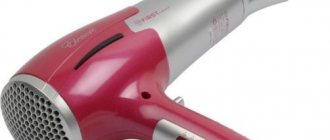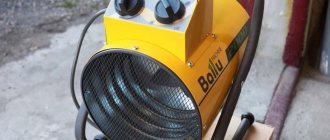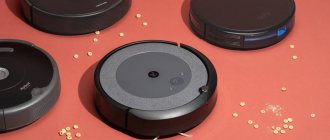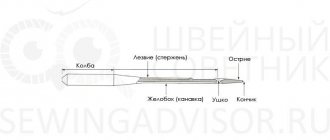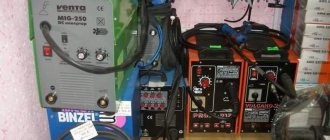- Differences between an inhaler and a nebulizer
- What does a nebulizer consist of?
- What does the size of aerosol particles indicate?
- For what diseases are inhalers and nebulizers used?
- Tips for choosing an inhaler
- At what age can you use an inhaler?
- How to choose an inhaler for children
- What is important to remember
An inhaler is a device for inhaling medications for the prevention and treatment of respiratory diseases. In this article we will tell you how to choose an inhaler, how these devices differ, what types they exist and who they are suitable for.
Differences between an inhaler and a nebulizer
There are four types of inhalers. The simplest ones are steam. They turn the medicine into inhalable vapor. The other three are more complex systems called “nebulizers.” They turn medications not into vapor, but into a fine aerosol. Depending on the technology, there are compressor, ultrasonic and mesh nebulizers. Despite this difference, the words “inhaler” and “nebulizer” are often used interchangeably.
Steam inhaler
The steam inhaler heats and vaporizes the medicine. The resulting steam consists of large particles. They cannot penetrate the lower respiratory tract, so steam inhalers are only suitable for treating the upper respiratory organs - the nasal cavity, nasal and oral parts of the pharynx.
Steam inhalers are cheaper and have their disadvantages.
- The concentration of the sprayed substance is often below the minimum required for therapeutic effect.
- There are only so many medications you can use with a steam inhaler: most medications are destroyed by heat. Therefore, essential oils, saline solutions or mineral water are suitable for the inhaler.
- Steam inhalations are contraindicated at high body temperatures.
- Inhalations using steam devices give results only at the onset of the disease or are used for prevention.
Types of nebulizers
Compressor nebulizer
A compressor nebulizer creates an aerosol using air that enters the chamber with the medicine under pressure. This inhaler works best for coughs and runny noses. However, inhalations can only be done at home - such devices operate on mains power and take up a lot of space. Any medication can be used with a compressor nebulizer.
Ultrasonic nebulizers
Ultrasonic nebulizers create an aerosol by vibrating a piezoelectric element on the surface of the solution. They are compact and silent, so they are convenient to take with you. The noiselessness allows small children to inhale even when they are sleeping. The disadvantage of this technology is that the device cannot use antibiotics, hormones, mucolytics and other substances that are destroyed when heated. You can inhale saline solution, mineral water, and medicines based on plant extracts.
Mesh inhalers
Mesh inhalers create an aerosol by sifting the medicine through a fine mesh membrane (mesh in English - “mesh”). Such nebulizers are well suited for allergy sufferers and asthmatics. You can use any medicine with them and carry out inhalations anywhere - they are compact and run on batteries. Tilt does not affect the operation of the mesh inhaler, so it can be used to perform procedures while lying down. Typically, devices of this type are more expensive than others.
USING COOKIES
Our website uses cookies. Below you can find out more about how we work with them and how they can be controlled.
When you visit this website, you consent to the use of cookies in accordance with this cookie notice. If you do not agree to these terms, please disable cookies by following the instructions in this cookie notice to prevent cookies from being stored on your device by this website.
What are cookies?
Cookies are small text files that are sent to your device when you visit a website. The cookies are then returned to the original website on each subsequent visit, or to another website that recognizes the cookies. Cookies act as memory for a website, allowing the website to recognize your device when you visit it. Cookies can also remember your preferences, improve your user experience, and tailor the advertising you see to suit your needs.
You can find more information about downloaded cookies, including how to set cookies on your device, as well as how to manage and delete them, at: www.aboutcookies.org
Types of cookies:
Sessional and permanent
We may use session cookies: these only last until you close your browser. But we also use persistent cookies, which are stored for a longer, specified period of time.
Third Party Cookies
Our website may allow providers to load third party cookies on the services we offer. These files are not under our control. For more information about how a third party provider uses cookies, please visit the website of the relevant third party provider. Detailed information about the third-party cookies running on this website, including their purpose, is provided in the table below.
Cookies used on this website
Below is a brief description of the cookies that work on this website. You should check other AstraZeneca websites as their use of cookies may vary.
Necessary cookies
These files are essential to the basic operation of the website, supporting important functionality such as shopping carts, and the technical operation of the website to ensure its proper functioning.
Website visit cookies
These files allow the website to remember your choices (for example, language or region) and provide other, more comprehensive user adaptation capabilities. Typically, these types of cookies do not collect personal data.
Cookies by service level
These cookies are used to operate the website and include customer surveys, recording visitor numbers and other web analytics. They may also collect limited personal data.
Marketing, anonymous, tracking, cross-site cookies
These cookies are used to track our visitors through our websites. They collect information about how visitors use a website, such as which pages they look at most often and whether they receive web page error messages. These cookies may be used to track individual visitors through our websites: for example, by storing a unique visitor ID so that the visitor can be identified by the websites.
Cookies for marketing, targeted advertising
These files are used to track browsing habits and activities. We use this information to be able to show you targeted/personalized marketing materials. With these types of cookies, we may collect personal data and use it to show targeted content.
How to control and delete cookies
Most web browsers accept cookies, but you can change your browser settings to refuse new cookies, disable existing ones, or simply notify you when new cookies are sent to your device.
To set up your browser and refuse cookies, please read its instructions (usually located in the “Help”, “Tools” or “Edit” menu). More detailed guidance can be found at www.aboutcookies.org
Please note that if you refuse or disable cookies, some functionality of the website may be lost. Additionally, disabling cookies or a category of cookies does not remove cookies from your browser. You will need to do this yourself.
Changes to how our cookies work
Notice of any changes to the operation of cookies for this website will be posted here and, if necessary, identified on our web pages highlighting any changes.
Contact Information
If you have any questions regarding cookies, please contact us at
What does the size of aerosol particles indicate?
The effectiveness of a nebulizer in treating a particular disease depends on the average size of aerosol particles.
Particle size is usually measured in micrometers (µm). Nebulizers produce an aerosol with particles of various sizes.
- Particles with a diameter of 5–10 microns
settle in the larynx and nasopharynx. - 2–5 microns
- in the trachea and bronchi. - 0.5–2 microns
- penetrate the alveoli.
However, the technical characteristics of the device indicate the average particle size.
So, if a nebulizer has an average particle size of 3 microns, this means that only half of all aerosol particles will be 3 microns, the other half will consist of particles of larger and smaller sizes. Some of them will settle in the larynx, some in the alveoli. Thus, nebulizers with an average particle size of 2 to 5 microns affect all parts of the respiratory system. They are well suited for treating seasonal diseases. For many models, it is possible to switch the particle size for targeted therapy of a particular area of the respiratory system.
The best ultrasonic nebulizers
1
Little Doctor LD-250U
Rating:4.8
- attachments: adult mask, mouth attachment, children's mask
- particle size adjustment
- spray rate: 1.5ml/min
- medicine container volume: 12 ml
- continuous operation time: 30 min
Average price: 3,390 rub.
The device is intended for inhalation at home and in physiotherapy rooms. The therapeutic solution is crushed into an aerosol and penetrates into the farthest parts of the respiratory tract.
Peculiarities:
- high spray speed and high aerosol flow force;
- large volume of medication tank (12 ml);
- There are no age restrictions on using the device.
Hormone therapy sessions for the treatment of bronchial asthma, antibiotics and a number of bacteriological drugs cannot be used on this device. For these purposes, other models from our rating are purchased (for example, AND UN-233AC-M or Xiaomi Andon VP-M3A).
2
Medisana Inhaler USC portable
Rating:4.7
- attachments: adult mask, mouth attachment, children's mask
- average particle size: 4.8 µm
- spray rate: 0.3 ml/min
- medicine container volume: 8 ml
- continuous operation time: 15 min
Average price: RUB 3,999.
Unlike the previous nebulizer, which is successfully used in physiotherapy rooms, the Medisana device is intended exclusively for home therapy of the respiratory system. It operates silently and uses almost all the solution in the tank.
Peculiarities:
- the device is powered by AA batteries and belongs to the mobile category;
- two types of inhalations are possible through a mask or mouthpiece;
- automatically turns off at the end of the session, no need to track the inhalation time.
The device effectively maintains health all year round and helps avoid more serious types of treatment.
3
Almaz Comfort-02 SMART
Rating:4.6
- attachments: adult mask, children's mask
- average particle size: 2.7 microns
- nebulization speed: 1ml/min
- medicine container volume: 14 ml
- continuous operation time: 10 min
- 26 people bought this product
Average price: 2,200 rub.
The device allows for inhalation and aromatherapy. You can load medicine into the container and perform full-fledged physiotherapeutic procedures for the lungs and bronchi. Aromatic oil is used as an antiseptic, sedative or tonic.
Peculiarities:
- the spray chamber is equipped with a backlight to control the level of the medicine;
- the ability to load a wide range of sprayed substances, solutions, decoctions;
- Heating the aerosol increases the comfort of the procedure.
The device can be used to treat seriously ill people during sleep. Local illumination on the nebulizer is sufficient for carrying out the procedure in a dark room.
***
The rating of inhalers and nebulizers is presented for informational purposes, informs about the capabilities of the devices and does NOT replace a mandatory consultation with a doctor.
For what diseases are inhalers and nebulizers used?
Inhalers are designed to combat various diseases of the respiratory system, but they can also be used for prevention. As a rule, procedures are prescribed to alleviate a dry cough during a cold. A nebulizer helps relieve swelling and moisten the airways. Cough with phlegm can also be treated with an inhaler, which helps remove phlegm from the lungs.
The nebulizer is also used to strengthen the immune system and for the following acute and chronic diseases.
- Runny nose.
- Acute or chronic rhinitis.
- Mild forms of bronchitis.
- Mild form of pneumonia.
- Fungal and viral infections.
- Inflammation of the mucous membranes.
The inhaler is also used for complex diseases with acute attacks - asthma and allergic reactions - for quick relief. In such cases, the doctor selects medications.
Types of inhalers
Nebulizers can be divided into several types according to their operating principle, design, and configuration.
- Steam. They are a container in which herbal decoctions or essential oils turn into steam under the influence of temperature. The patient breathes hot air, warming the nasopharynx. The size of dispersed particles in a steam inhaler is large - 8-10 microns. They do not penetrate deep into the respiratory tract. The device is effective for throat diseases and runny nose.
- Compressor. The piston compressor creates a powerful air flow that converts the liquid medicine into tiny aerosol particles. They are able to penetrate into the farthest corners of the respiratory system and affect inflammatory processes of various etiologies. A universal inhaler for the whole family has virtually no restrictions in use; it helps not only with colds, but also relieves asthma attacks and provides hormonal therapy. The disadvantages include the size of the device and the noise when the compressor operates.
- Ultrasonic. Here, particle splitting occurs using high-frequency ultrasonic waves. The device is compact and easy to use, suitable for the treatment of all diseases of the bronchopulmonary system, but it cannot be called universal. Not all medications can be used; many of them are destroyed by ultrasound.
- Electronic mesh (mesh inhalers). The main element of the design is a mesh membrane, through which the medicine passes under the influence of ultrasound and is split into small particles. The inhaler combines all the positive qualities of ultrasonic and compressor devices; it cannot use only oil solutions, but otherwise it is considered universal. Compact, silent, efficient, but expensive.
- Spacer. It is an intermediary device for better penetration of drugs when relieving asthma attacks and hormonal therapy. Outwardly it looks like a flask, on one side of which an inhaler can is inserted, and on the other - a face mask. The dose of medicine inside the flask is produced into very small particles and enters in full into the lungs and bronchi, rather than settling in the oral cavity.
Which inhaler is best is up to you, it depends entirely on your needs.
Some people are quite happy with a regular steam bath to prevent the development of a cold. And for some, only a mesh inhaler or ultrasound is suitable for complex therapy of complex diseases of the respiratory system. If noise and large sizes do not bother you, then it is better to choose a compressor. It is relatively cheap, can use almost all types of medications, and is effective for any disease. Well, in case of frequent trips, of course, it is better to opt for more expensive and compact models with ultrasonic and electronic mesh operating principles.
Tips for choosing an inhaler
If you are taking medications with a strict dosage (such as hormones), choose a nebulizer that synchronizes with your breathing.
Such models deliver an aerosol only during inhalation, which allows you to save medicine and accurately adhere to the dosage. Here are the suitable models.
Inhaler OMRON Comp Air NE-C24
Inhaler OMRON CompAir NE-C28 Plus (NE-C28P-RU)
Inhaler Little Doctor LD-212C (white)
Inhaler Little Doctor LD-210C
Compressor inhalers are suitable for those who are looking for a cough remedy, as well as for patients with chronic diseases who need frequent inhalations. Powerful nebulizers with a high inhalation rate are good for these purposes.
For seriously ill patients who need lengthy procedures, models with a large chamber volume and a powerful compressor that operate continuously are suitable. For example, B.Well PRO-110, A&D CN-233, OMRON CompAir NE-C28 Plus, A&D CN-231.
Small children may be frightened by a loud device, so if the inhaler is for a child, pay attention to the noise level. As mentioned above, the quietest nebulizers are ultrasonic. Mesh inhalers are also quiet. Many compressor inhalers for children come in the form of toys or with various fun designs to interest the baby.
Inhaler OMRON Comp AIR NE-C24 Kids
Inhaler B.Well PRO-115 Locomotive
Inhaler A&D CN-232
Inhaler Little Doctor LD-212C (yellow)
If you need to always have your inhaler at hand, choose a nebulizer with mesh technology. Ultrasonic nebulizers are also portable, but remember that not all medications can be used with them. For example, Little Doctor LD-207U, A&D UN-233 are suitable for you.
When choosing an inhaler, pay attention to the residual volume of medication in the chamber. The smaller it is, the more economically the product will be spent. This is important when it comes to expensive medications.
For the treatment of diseases of the upper respiratory tract, a steam inhaler or any nebulizer that sprays an aerosol with large particles, 5–10 microns in size, is suitable. As a universal device, you can choose a nebulizer with the ability to adjust the particle size.
The best models of steam inhalers
They work on the principle of heating a liquid and evaporating it. The steam can reach a temperature of 50 degrees; if the patient’s body temperature exceeds 37.5 degrees, the device cannot be used. Use is not allowed if you have diseases of the cardiovascular system or tuberculosis.
Berdsk Romashka-3
An inexpensive multifunctional inhaler with an average cost of 1200 rubles. The set includes a nozzle for inhalation, facial baths - a cosmetic procedure that helps cleanse the skin and nourish it with useful components, aromatherapy - dispersing steam with essential oils. The steam temperature is adjustable, the position of the nozzles can also be changed. Mains powered.
Advantages:
- Multifunctionality.
- Facial skin cleansing and healing effect.
- Large face cap with the ability to change its position, convenient for cleaning the face.
- Heats liquid quickly.
- You can add herbal decoctions and essential oils.
Flaws:
- Questionable build quality and components.
B.Well WN-118
The average cost is 2300 rubles. Connects to the electrical network and supplies steam particles larger than 10 microns in size for the treatment of the upper respiratory tract. Can work continuously for up to 7 minutes. It is supplied with only a regular children's mask; there is no infant mask. There is a mask for cosmetic procedures.
Advantages:
- Budget price.
- Efficiency.
- You can use herbal infusions and oils.
- Easy maintenance and use.
- Comfortable steam temperature.
Flaws:
- There is no mask for infants.
MED2000 SI 03/SI 02
Inhalers for children, made in the form of toys, will cost about 2,000 rubles on average. The main difference: SI 03 is made in the shape of a dog, SI 02 - in the shape of a cow. The reservoir is designed for 8 ml of liquid, masks for children and adults, no infant masks.
Advantages:
- Attractive shape for children.
- Comes with a mask for children and adults.
- Italian design, high quality parts.
- Comfortable steam temperature.
Flaws:
- There is no infant mask.
At what age can you use an inhaler?
Before using the device, you should know at what age the inhaler can be used.
The nebulizer can be used by children from a very early age. Pediatricians advise using such devices even when treating infants. For young children, purchase an inhaler with convenient attachments (mouthpiece, nose tip, small face mask). Some brands sell a children's mask separately.
How to choose an inhaler for children
- To choose an inhaler for a child, carefully read the instructions before purchasing. The main parameter is safe operation. Therefore, children under one year old should not use steam devices: it is difficult for babies to cough up mucus.
- For a small child, it is better to choose an ultrasonic or mesh inhaler, as these devices are silent and have temperature control.
- An element of entertainment that distracts from the procedure is also important. Therefore, many manufacturers offer nebulizers in the form of toys with bright and colorful designs.
- Treatment of children should be carried out under the strict supervision of adults. In this case, the procedure should not last longer than 5 minutes.
What is important to remember
- If you need a device only for adults in case of treating a cold without fever, take a simple steam inhaler.
- If you need an inhaler for children that will help with coughs and runny noses, or you need a universal family model, choose a compressor device. It will work with all types of medications.
- Those suffering from asthma, allergy sufferers, or those who prefer to always have an inhaler at hand should choose mesh nebulizers. They are compact and work with any medicine.
- For inhalations, it is better for children and infants to choose between mesh inhalers and ultrasonic ones. They are quieter than compressor ones and deliver an aerosol in any position: you can inhale even while the child is sleeping. However, remember that ultrasonic devices cannot nebulize all types of medications.



